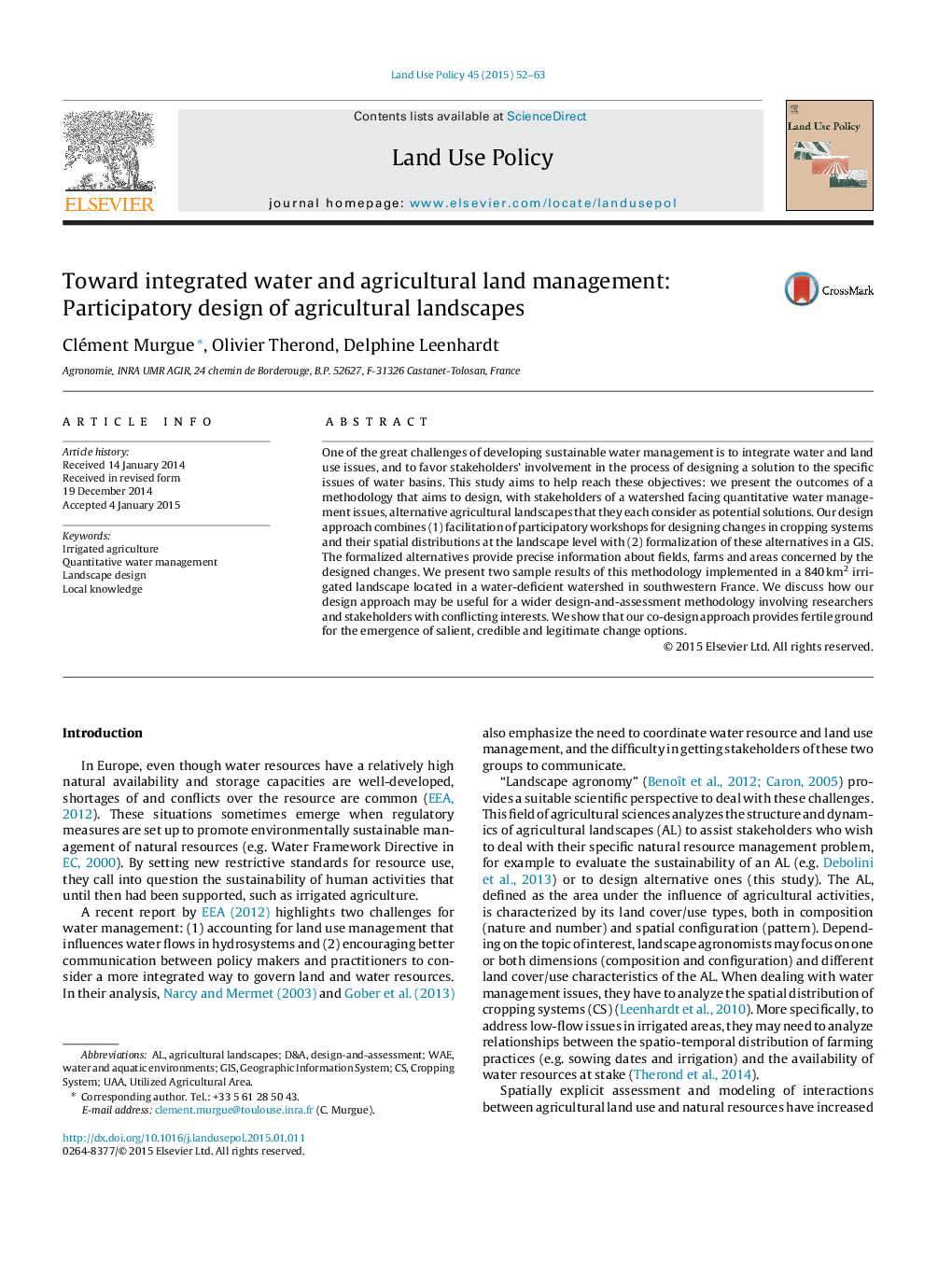| کد مقاله | کد نشریه | سال انتشار | مقاله انگلیسی | نسخه تمام متن |
|---|---|---|---|---|
| 92928 | 160103 | 2015 | 12 صفحه PDF | دانلود رایگان |
• We present a methodology for the collaborative design of alternative agricultural landscapes.
• This methodology allows for accompaniment of stakeholders in the specification of acceptable changes to deal with water-management issues.
• Stakeholders designed precisely-described changes in cropping systems, formalized in a spatially explicit model.
• Designing in separate groups increased the curiosity and desire of opposing parties to work together.
One of the great challenges of developing sustainable water management is to integrate water and land use issues, and to favor stakeholders’ involvement in the process of designing a solution to the specific issues of water basins. This study aims to help reach these objectives: we present the outcomes of a methodology that aims to design, with stakeholders of a watershed facing quantitative water management issues, alternative agricultural landscapes that they each consider as potential solutions. Our design approach combines (1) facilitation of participatory workshops for designing changes in cropping systems and their spatial distributions at the landscape level with (2) formalization of these alternatives in a GIS. The formalized alternatives provide precise information about fields, farms and areas concerned by the designed changes. We present two sample results of this methodology implemented in a 840 km2 irrigated landscape located in a water-deficient watershed in southwestern France. We discuss how our design approach may be useful for a wider design-and-assessment methodology involving researchers and stakeholders with conflicting interests. We show that our co-design approach provides fertile ground for the emergence of salient, credible and legitimate change options.
Organization of the design process into four participatory sequences and formalization step performed in the laboratory. The group facilitator has to manage the widening and narrowing of the possibilities to progressively elicitate the workshop participants' visions on options for change.Figure optionsDownload as PowerPoint slide
Journal: Land Use Policy - Volume 45, May 2015, Pages 52–63
